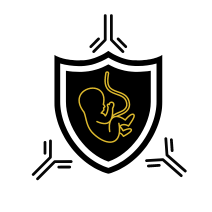Hysteroscopy is often recommended as a valuable component of an in-vitro fertilization (IVF) cycle for several reasons. Hysteroscopy is specially recommended in couples who have had previous miscarriages or problems with implantation. Also, a hysteroscopy assists in getting more decisive information than the Hysterosalpingography, or HSG report. Hence, it is regarded as the gold standard for uterine assessment.
Let’s explore why hysteroscopy is considered beneficial and why it is recommended in the context of IVF:
Assessing Uterine Cavity: Hysteroscopy allows for a direct visual examination of the uterine cavity, providing detailed information about its structure and any potential abnormalities. This assessment is crucial before proceeding with IVF, as it ensures that the uterus is suitable for embryo implantation and pregnancy. By identifying and addressing intrauterine issues, such as polyps, fibroids, adhesions, or septum, hysteroscopy optimizes the chances of successful embryo implantation.
Optimizing Embryo Implantation: The presence of intrauterine abnormalities can compromise the implantation process during IVF. Hysteroscopy enables the removal of these abnormalities, creating a favorable environment for embryo implantation. By improving the condition of the uterine lining, hysteroscopy increases the chances of successful implantation, leading to higher IVF success rates.
Enhancing Success Rates: Studies have shown that performing hysteroscopy before IVF can significantly improve pregnancy rates. By addressing intrauterine abnormalities, hysteroscopy maximizes the likelihood of successful embryo implantation and subsequent pregnancy. Identifying and treating these issues before undergoing IVF increases the efficiency and effectiveness of the treatment, potentially reducing the need for additional cycles. However, it should be well understood that pre-IVF hysteroscopy aids in boosting implantation and pregnancy rates, but not live births.
Reducing the Risk of Complications: Hysteroscopy helps identify any undetected intrauterine abnormalities that may pose a risk during the IVF process. Conditions such as uterine adhesions or scar tissue (Asherman’s syndrome) can hinder embryo transfer or increase the risk of implantation failure. By diagnosing and addressing these issues, hysteroscopy minimizes the potential for complications during IVF and ensures a smoother treatment process.
Customizing Treatment: Hysteroscopy allows for personalized treatment planning. By identifying individual factors that may affect the success of IVF, such as uterine abnormalities, hysteroscopy enables a tailored approach to address specific needs. This customized treatment enhances the chances of successful embryo implantation and pregnancy.
It’s important to note that recommendations regarding hysteroscopy within an IVF cycle may vary based on individual circumstances and clinical judgment. The decision to perform hysteroscopy is made after considering factors such as medical history, previous fertility treatments, ultrasound findings, and the recommendations of fertility specialists.




